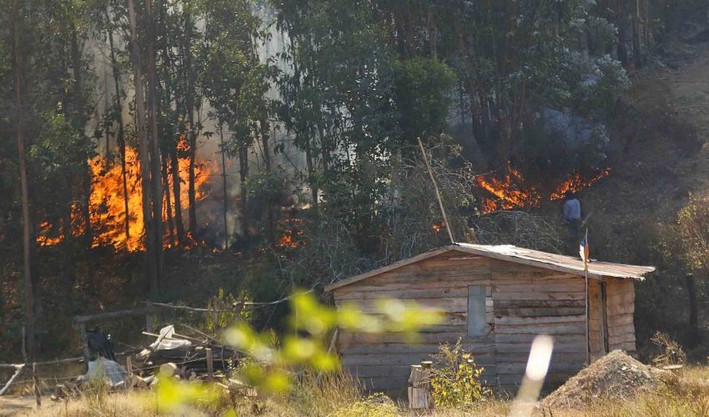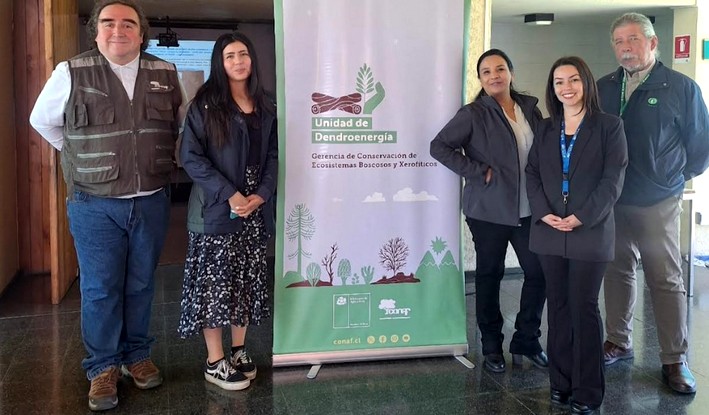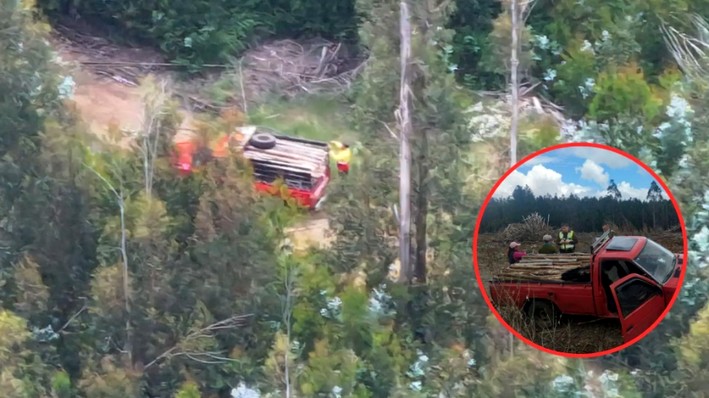Over 4,000 hectares affected by wildfires in the last 24 hours
In less than 24 hours, wildfires—which authorities believe were intentionally set—have burned a total area of 4,462 hectares, with 7 fires still being fought.
According to the latest report from the National Forestry Corporation (Conaf), Hualqui is the most affected municipality, totaling 2,116 hectares—1,756 in the Santa Matilde and Los Olivos sectors and 360 in Los Copihues.
Following Hualqui is Mulchén with 992 hectares in the Las Mercedes sector and the Santa Juana locality, called La Generala, with 1,200 hectares.
The aforementioned sectors, as reported by Conaf, are under Red Alert.
Further behind, according to the report, are 90.5 hectares in Antiquina and 57.5 in Pocuno, both located in Cañete. In the Santa Fe sector and Santa Bárbara, in El Respetado, another 2 hectares were affected, and in Los Ángeles, all the aforementioned areas remain without alerts.
Additionally, in Los Ángeles, 4 hectares were scorched by fire, and 0.16 hectares in Villa Los Profesores. The latter two are under control.
The presidential delegate, Eduardo Pacheco, expressed concern over the large number of fires affecting the region, which even reached 22 simultaneous hotspots on Sunday night but have since decreased to 6.
However, he stated that with the support of Conaf, firefighters, and forestry companies, the emergency has been controlled. Efforts continue in Mulchén, but Santa Juana and Hualqui remain priorities, prompting the deployment of a tanker plane and assistance from the Army and the Chilean Navy, respectively.
Meanwhile, Santa Juana Mayor Ángel Castro stated that the fire in his municipality is out of control, "with a risk of advancing toward a small village like Los Quiques, which has a school. If not contained, this fire could reach Arauco or even Curanilahue, so we urge authorities to provide maximum support and additional brigades."
In fact, a Cogrid meeting was held in Santa Juana, where it was determined that the fire spans 8.7 kilometers and over a thousand hectares. The presence of the PDI (Investigative Police) was confirmed to enhance community safety, along with Army brigades. "More aerial firefighting is needed due to the complex geography. It should start early at dawn to control this situation."
Firefighting Efforts
Conaf’s tanker plane, with a capacity of 15,000 liters, could not operate on Sunday due to weather conditions, as it requires different wind conditions than smaller aircraft. Yesterday, the awaited aircraft attacked various sectors in Santa Juana and Hualqui.
This effort was supported by 42 brigades, 10 aerial teams (including helicopters and planes), plus assistance from forestry companies, firefighters, and municipalities.
As of press time, 2 homes were reported destroyed, and the government is preparing social assistance files to provide aid and offering shelters.
Arson or Intentionality
The presidential delegate ruled out agricultural burns as the cause of the wildfires, as the fire outbreaks occurred in hard-to-reach areas, making containment difficult—particularly in Santa Juana near the Nacimiento border and in Hualqui, where multiple hotspots exist.
"We saw kilometers of these outbreaks in Hualqui’s border areas. The PDI is investigating this, examining the scenes in Hualqui and Santa Juana. Another investigative line will focus on Santa Bárbara and Mulchén (...) to determine the intentionality behind these fires."
The authority stated that the presence of both the Navy and the Army will support Carabineros in preventing intentional acts, "for example, in Hualqui, the mayor spotted a suspicious person carrying fuel containers, who was intercepted."
The Biobío presidential delegate confirmed that, given the PDI’s ongoing investigations, he requested the legal unit to prepare necessary complaints. "The message is clear: we will use all state tools to pursue anyone who intentionally caused these wildfires." He added that the complaint will be filed in the coming hours.
Military Patrols
Ricardo Fuentes, mayor of Hualqui and president of the Biobío Municipalities Association, expressed concern over three fire outbreaks in his municipality, calling them "deliberate and simultaneous (...) one is dangerously close to urban areas, about 4.5 kilometers away." He thanked firefighting efforts but stressed the need for military patrols not just during fires but throughout high-risk periods.
The mayor of Hualqui noted that while emergency response has improved, lawmakers must ensure financial resources are delivered swiftly.
"We can’t wait for emergencies to deploy the military (...) there must be permanent protection for rural territories, which face the greatest wildfire risks."
Similarly, Regional Governor Sergio Giacaman asserted that the fires were clearly intentional, and while the region has strong response capabilities, the perpetrators "knew the perfect timing with high temperatures and wind. We must prepare—either by declaring a State of Exception with military patrols or enacting a Fire Law to track arsonists and prevent these terrorists or criminals from moving freely."
Class Suspensions and Smoke
Classes remain suspended in 29 educational institutions, 13 of which were directly affected by wildfire smoke.
Health Seremi Eduardo Barra advised avoiding smoke exposure, recommending covering the mouth and nose with damp cloths if masks are unavailable and avoiding physical activity.
He also urged sealing homes with damp cloths on doors and windows to prevent smoke infiltration.
Meanwhile, Education Seremi Carlos Benedetti confirmed 13 schools directly affected by fires: 8 in Hualqui, 4 in Santa Juana, and 1 in Cañete (as a preventive measure). Due to smoke, these schools must suspend outdoor physical activities.
Another 16 schools in Biobío Province suspended classes due to wind damage, including roof collapses, broken windows, and fallen trees.
Scale of the Fires
The large number of simultaneous outbreaks, combined with Sunday’s strong winds exceeding 100 km/h—as explained by Conaf Executive Director Aída Baldini—were the main factors behind the fires’ severity in Biobío and La Araucanía.
In fact, a Thursday meteorological warning from Chile’s Weather Service predicted winds of 40-60 km/h in the foothills.
Captain Gonzalo Bertolotto, head of Talcahuano’s Maritime Meteorological Center, stated the warning was due to intense winds from across the Andes, "a dry wind that raises temperatures and can spread wildfires."
Source:Diario Concepción

















